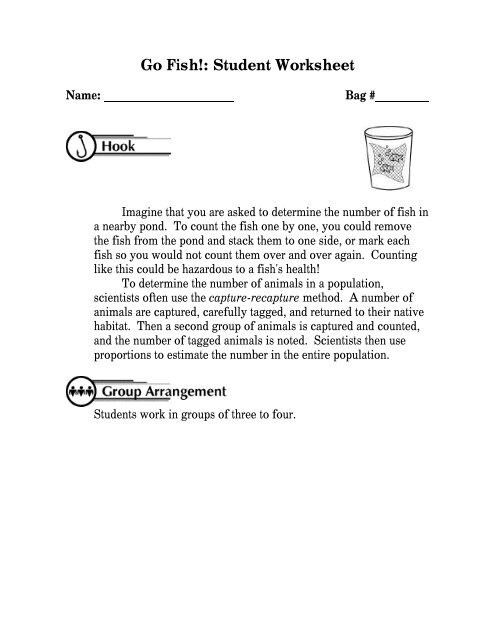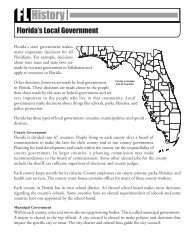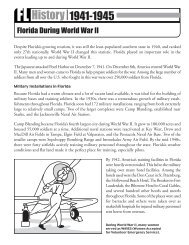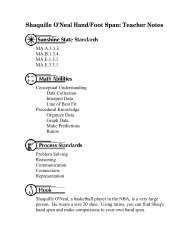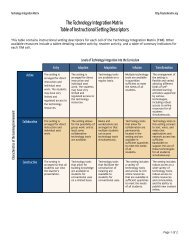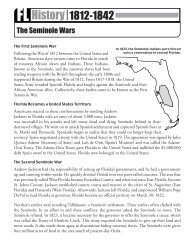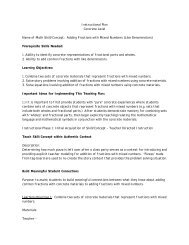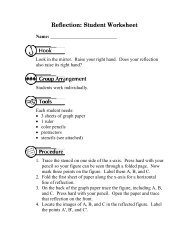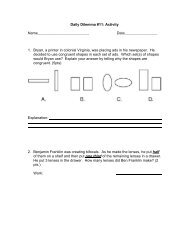Go Fish!: Student Worksheet
Go Fish!: Student Worksheet
Go Fish!: Student Worksheet
- No tags were found...
You also want an ePaper? Increase the reach of your titles
YUMPU automatically turns print PDFs into web optimized ePapers that Google loves.
Each group needs:• 1 paper lunch sack - represents the“lake”• A supply of goldfish crackers -represent the “fish” in the lake• A supply of pretzel fish crackers - represent the “tagged fish”• 1 styrofoam cup - represents the “net”• 1 paper plateA. Collect the DataCapture:1. Each team receives a paper lunch bag with goldfishcrackers inside.2. With the “net,” scoop a sample of goldfish out of your“lake” onto the paper plate.3. Replace your sample of goldfish with pretzel fish.These are your “tagged” fish.4. Count the number of "tagged" (pretzel) fish and thenreturn them to the bag.5. There are tagged fish in the entire lake.Recapture:6. Shake the bag gently.7. For the first casting, use your net (cup) to remove asample of fish. Count the number of “tagged” (pretzel)fish in your sample and record the total in the firstcolumn below.8. Return all of these fish to the lake (bag) and shakegently to mix them up.
9. Repeat this process until you have gathered informationon 10 samples and filled in the table below.Sample Number12345678910AverageNumber of Tagged<strong>Fish</strong> in SampleTotal Number of <strong>Fish</strong>from SampleB. Analyze the Data1. To find the AVERAGE number of tagged fish, add upall 10 samples of the tagged fish and divide by 10. Dothe same thing to find the AVERAGE number of totalfish in your samples. (Using the AVERAGE numberwith 10 samples is more reliable than using any onesample's data.)2. Use the proportion below to estimate the total numberof fish in your lake:Average # tagged in samples = # tagged in lake (A5)Average total # in samples Total # fish in lakeESTIMATED POPULATION:
3. Now count the total number of fish in your lake todetermine how close your estimate from the "sampling"is to the actual number of fish in the lake.ACTUAL POPULATION:4. How close were you to the actual number of fish?As a result of this activity, students learn how to gatherinformation about a large population based on a representativesample whose makeup is similar.1. Where else would scientists use this capture/recapturemethod?2. What are some of the factors that could have caused anestimate to be close or not so close to the actual number offish?


